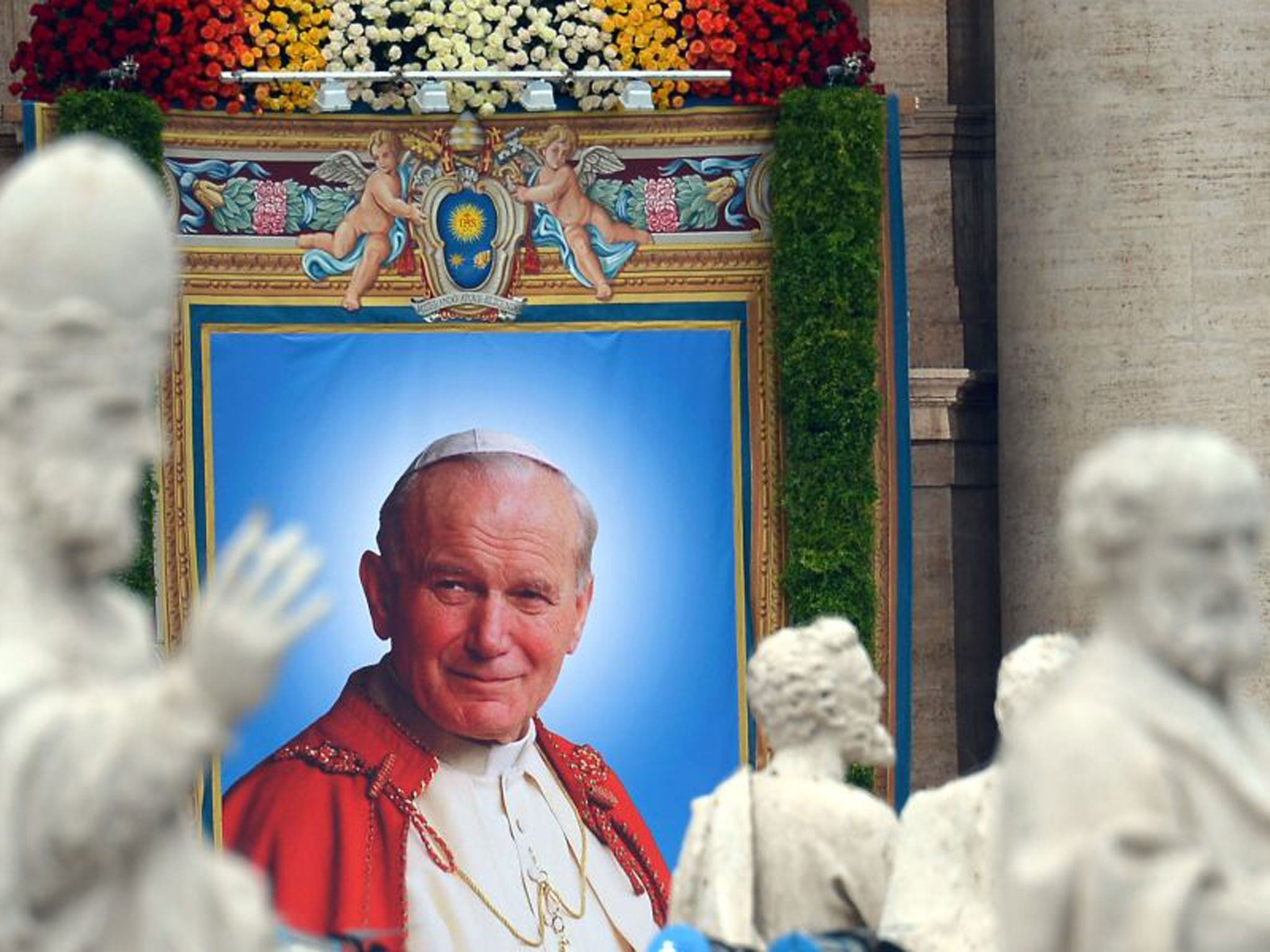You don't have to be a saint to be a saint
You don't have to be all that saintly to be a saint, as even Catholic clerics attest. But then, argues Peter Stanford canonisation has long been more about politics than purity


It has to be the strangest justification for declaring someone a saint. Pressed over the weekend to justify rushing the late Pope John Paul II through the usual centuries-long process of canonisation just nine years after he died, Catholic clerics lined up to point out that you don't have to be a saint to be made a saint. "We're not saying here is a perfect man and a perfect pope," explained Cardinal Vincent Nichols, the leader of the Catholic Church in England and Wales.
No, he's not inhaled too much incense, it's just that he is sensible enough to realise that such a claim would be hard to justify. The Polish pontiff, aside from his many other potentially saintly achievements, also presided over a cover-up of the activities of paedophile priests, including giving at least one notorious predator, the Mexican Father Marcial Maciel, sanctuary from justice inside the Vatican. That must have been one of the "decisions" that Cardinal Nichols announced that the church wasn't canonising.
The whole process of handing out halos, though, has long been a bit hit or miss. For the first 800 or so years of the Church's existence, saints emerged by popular acclaim. A holy man, or woman, would die and admirers would universally pronounce them a saint.
Act in haste and repent at leisure was the order of the day, with many of these early saints subsequently unveiled as having another side to them. In 4th century Antioch, for instance, the revered Pelagia, the holy "beardless monk", was discovered to be a woman in disguise when his body was being prepared for burial, but after he had been acclaimed a saint. Others may never even have existed at all. Saints Christopher and Valentine were both demoted from their heavenly perches in 1969 by the Vatican itself on the grounds that they may be pure fabrication.
Read more: How to build a saint
Once the Vatican took charge of saint-making in the 12th century, it introduced rules – which usually included a decent delay for any skeletons to emerge, and the requirement for two post-mortem miraculous cures to have taken place as a result of prayers to the individual in question. That rule still remains in place, but recent popes have played free and fast with it. Pope Francis wrote it off, for instance, in the case of Pope John XXIII, so that he could twin canonising the largely conservative John Paul II with the simultaneous elevation of an earlier pontiff, a noted liberal reformer.
But John Paul II himself refused to short-circuit the process in response to the loud, persistent and popularly based appeals for the canonisation of Archbishop Oscar Romero of San Salvador, murdered by death squads at his altar in 1980 for speaking up for the poor of his blighted country. As Pope, John Paul was wary of Romero's connection with liberation theology but now Pope Francis, much more in tune with Romero's approach, is said to be fast-tracking the Salvadoran.
Canonisation has long often been as much about politics as holiness. Church politics, that is. So there has been much foot-dragging, for example, around pleas to canonise Dorothy Day, the American founder in the 1930s of the Catholic Worker Movement. One obstacle seems to be that in her youth she had an abortion. Some unsaintly "decisions" seem to be harder to overlook than others.
Then there was the haste with which the "cause" of the founder of the secretive church organisation Opus Dei was hurried through. While very senior figures in the Church had the most profound doubts about the legacy of Josemaria Escriva, John Paul was a huge fan, so, in 2002, he ignored the protests and bestowed a halo on him as "among the great witnesses of Christianity". It was a decision that just as surely brought the whole saint-making process into disrepute as the sight of political donors receiving peerages tarnishes the House of Lords.
And if canonisation is occasionally intended as a way of closing the debate on a controversial character – which may be the thinking behind moves to make a saint of the wartime pope, Pius XII, accused of remaining silent when he knew about the Holocaust – history would suggest it is a flawed strategy. Indeed, often it can have the opposite effect, redoubling the efforts of sceptics. The canonisation in 2002 of the Italian Padre Pio, who was said to bear the stigmata on his body, has intensified debate about his authenticity. Leaked Vatican reports have shown that the Church had its own suspicions that he may have made the marks himself.
So, yes, canonisation can be an outdated, opaque practice that does little to enhance the Catholic Church's claims to be part of the modern world. Would I consign it to limbo? If I were coldly logical, of course I would, but religion isn't about cold logic. And, as those vast crowds gathered in St Peter's Square at the weekend surely suggest, we're all partial to role models. Just don't expect them to be perfect.
Peter Stanford is a former editor of 'The Catholic Herald'
Join our commenting forum
Join thought-provoking conversations, follow other Independent readers and see their replies
Comments